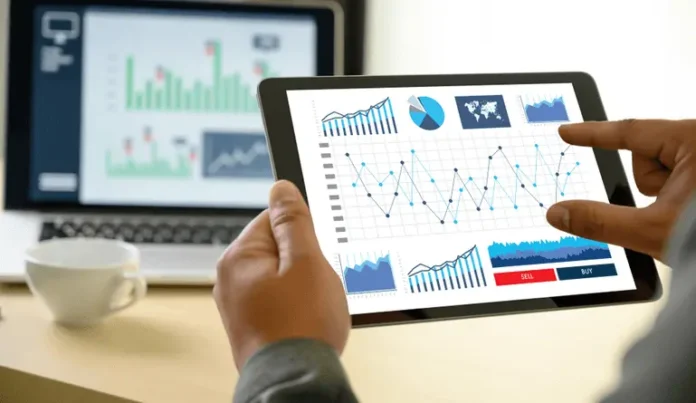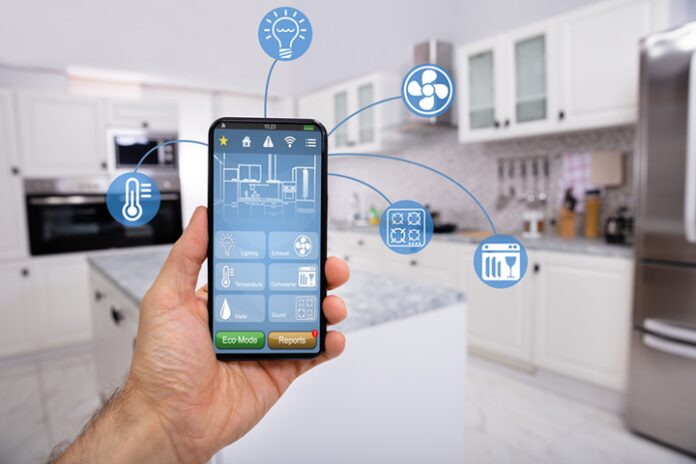In an era when inflation is running at a record setting pace, working adults in all income brackets are searching for ways to lower their monthly expenses. The silver lining inside the dark cloud of the modern economy is that it’s relatively simple to fight rising bills. Whether your main area of financial frustration focuses on groceries, utilities, student loans, or something else, there are some powerful solutions that can bring costs down and ease the budget crunch most homeowners face in the 2020s.
In some cases, all it takes is to download an app, purchase a software product, install a power saving device, visit a financial platform, or leverage the power of online calculators to minimize what you pay to live, eat, and enjoy life. Some of the most popular tactics focus on using coupon and discount apps when shopping, visiting online platforms where you can refinance student loans and employing financial planning software. Additionally, working adults who want a major dose of budget relief can find it by using programmable thermostats, special savings apps, rooftop solar arrays, and motion-sensitive lights. Consider the following ways that technology can lower your everyday expenses.
Platforms to Refinance Student Loans

Visiting a relevant platform and using one of its online calculators is a low-tech way to score major savings. That’s particularly true when it comes to reducing your regular student loan payments. For many adults, education debt expenses are one of the largest parts of their budget. Most refinancing platforms allow users to input basic data and explore how refinancing can change their situation for the better. Exchanging one or more loans for a new one that comes with better rates, terms, repayment length, and lower monthly payments is what refinancing is all about. It’s also why so many people do it. If you want to minimize recurring bills, explore a platform like this and use a calculator tool to see how much you could save.
Coupon & Discount Apps

The niche for budget-related apps has been growing at a rapid pace. Leading the way are downloadable programs that anyone can use to save on thousands of common household goods, food items, personal services, and more. While some of the applications are store-specific, others are tied to products and brands, which means you can use them anywhere. How much are consumers saving with these clever pieces of digital code? Those who become familiar with the top offerings and do a modest amount of research to find the best ones can take about 10% off their regular grocery and other shopping bills. Discount apps work a bit differently. They’re usually connected with big-ticket items and household appliances. Some work only at apparel stores. Either way, shoppers who use them get one-time discounts of up to 50% on a wide variety of products.
Financial Planning Software

Software in the financial planning niche has come a long way in the past five years. Today’s products are highly sophisticated tools that can transform your personal budget into a lean, mean, efficient plan that cuts expenses reasonably and uses built-in logic algorithms. Expect to spend two hours or more learning how to manipulate all the features of the product you choose. Most work on a question-and-answer basis, much like common tax prep programs. The results speak for themselves because the software uses vast databases and national averages to let you know whether you’re above or below typical cutoff points for categories like rent, meals, insurance, discretionary spending, etc.
Programmable Thermostats
The low-priced wonder gadget of the century, sophisticated thermostats, are now available in most hardware and big-box stores. The devices are easy to install and use. They let homeowners and apartment dwellers create customized start and stop levels for daily, weekly, and monthly temperature settings. Users can save as much as 20% on electric bills. Be sure to compare prices and features because the market has become quite crowded, and there are a few low-quality, imported brands that aren’t worth the trouble.
Rounding Apps
Browse your favorite app stores online and test-drive a few of the top-rated rounding applications. They work directly through digital payment devices like smartphones, computers, laptops, and tablets. As long as you pay with a device, you can use a rounding app to round up purchase prices to the next-highest dollar amount. Then, those incremental cents are automatically deposited into the account of your choice. Most people are surprised to discover that they can save up to $100 or more per year by doing nothing more than putting these clever little apps on their payment devices.
Solar Panels

Rooftop solar panels have been around for almost 50 years, but recent scientific breakthroughs have upped their efficiency and lowered their cost. While they’re not inexpensive, the units have the potential to pay for themselves in two ways. First, they create electricity and thus lower utility bills in a direct way. Second, if you choose to leave them in place on the roof when you sell a home, they can increase the potential value of the property. The latest versions can be installed on the ground, so consider using both rooftop and ground-based units for maximum savings.
Motion-Sensitive Lighting

One of the more frustrating recurring expenses for homeowners is the electric bill. As prices for power have risen in recent years, people have sought creative ways to reduce what they spend for electrification. Sophisticated thermostats can do a great job of slicing a decent portion of a person’s monthly utility bill. Aside from heating and cooling costs, however, another component of the total is the result of lighting.
Illumination, as it’s called in the utility industry, is over-used in most homes. The main way people waste electricity is by leaving lights on in empty rooms, using too many lamps in their main living areas, and putting inefficient bulbs into sockets. What’s the solution? For many savvy homeowners, reducing utility expenses is as easy as purchasing a motion-sensitive lighting system. The inexpensive devices attach to any electrical device and activate it when they sense nearby movement.









